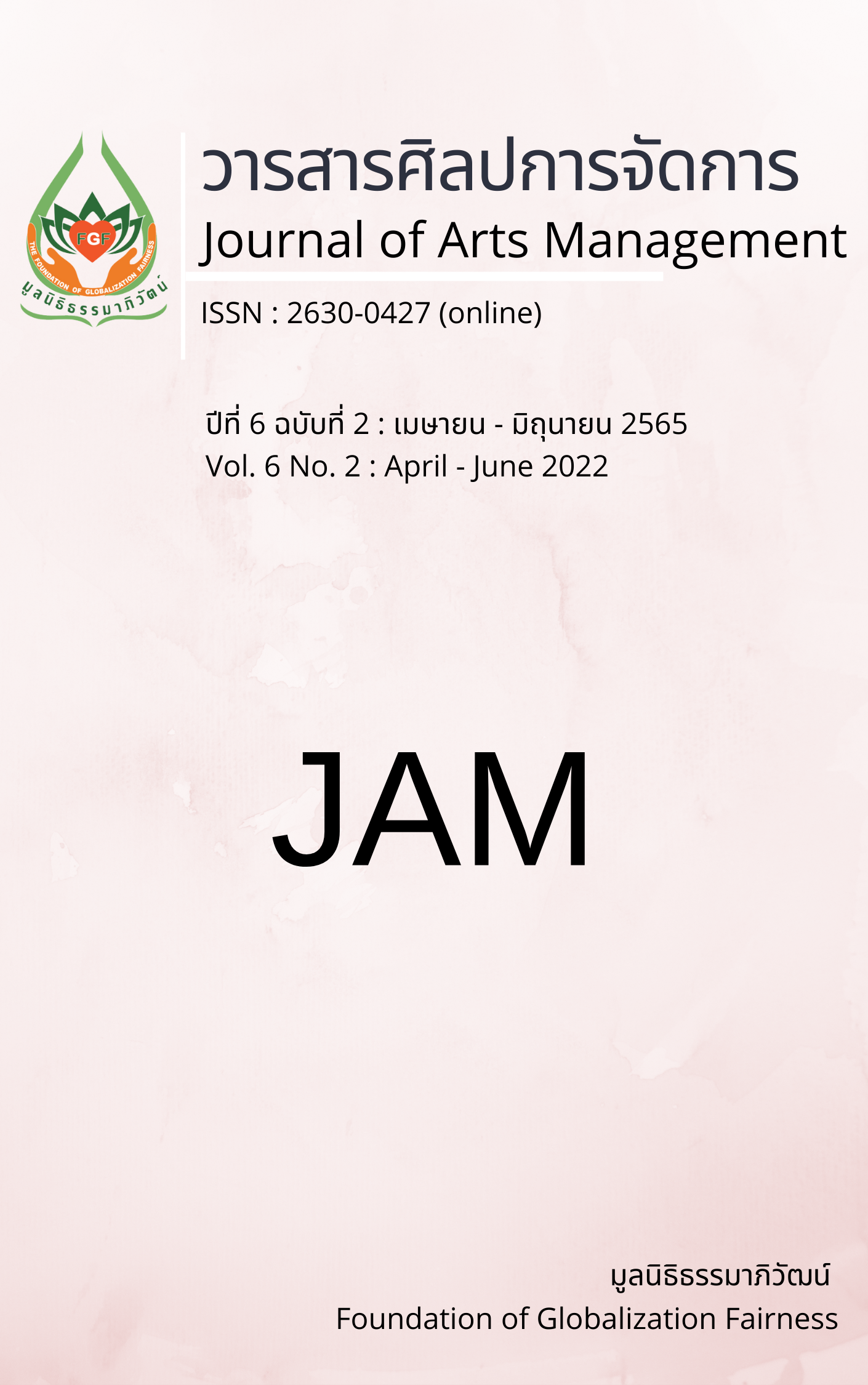Community-Based Tourism Management for the Conservation of Natural Resources within the Areas of Reservoir under the Royal Initiative at Ban Phu Din, Mae Hor Phra Sub-district Mae Taeng District, Chiang Mai Province
Main Article Content
Abstract
The objectives of this article were 1) to develop the potential of tourism activities and community-based tourism services and 2) to create community-based tourism routes. This research was mixed-method research. The tools used for data collection included community-based tourism management tools, SWOT Analysis, Alternative Strategy Formation, Improvement and assessment of appropriate alternative strategies (TOWS MATRIX), and participatory action research (PAR). Finally, the SPSS program was used to analyze the data, including mathematical statistics. The results of this research showed that: in terms of the development potential of tourism activities and community-based tourism services to conserve resources in the reservoir area of Royal Initiative Project Ban Phu Din, there were important community development potential processes such as transfer of knowledge, planning, and meeting, activity design and tourism programs, experimental of pilot activities, and participation and development. A new tourist route was established, so-called the Phu Din Reservoir-Mae Ho Phra Reservoir route. There were learning activities on resources and water conservation, which were: (1) Learning activities at Huai Phu Din Reservoir learning center; (2) Trekking activities to study nature trails and learn about resources and water conservation; (3) Establishment of a learning center on agriculture and medicinal plants; (4) Establishment of a natural honey beekeeping learning center and (5) Homestay and camping activities. The satisfaction result of tourists towards the activities and community-based tourism programs at overall was at a high level.
Article Details

This work is licensed under a Creative Commons Attribution-NonCommercial-NoDerivatives 4.0 International License.
Views and opinions appearing in articles in the Journal of Arts of Management It is the responsibility of the author of the article. and does not constitute the view and responsibility of the editorial team I agree that the article is copyright of the Arts and Management Journal.
References
Chanin, O. et al. (2018). Knowledge guide for participation in community tourism management. UT.
Chanreungrit, T. (2019). A study of tourism management approach by community for sustainable tourism case study: Chanthaboon waterfront Mueng District Chanthaburi Province[Master’s Thesis, Bangkok University].
Collier, A., & Harraway, S. (1997). Principle of tourism. Longman.
Chittangwattana B. (2005). Tourism industry: Business press & design company limited. Travel and Tourism Research Association
Designated Areas for Sustainable Tourism Administration Public Organization. (2020). community based tourism development criteria. Designated Areas for Sustainable Tourism Administration Public Organization.
Kemmis, S., & MaTageart, R. (1988). The action research planner (3rd ed.). Deakin University.
Kemmis, S., & Wilkinson, M. (1998). Participatory action research and the study of practice. In B. Atweh.
Koch, T., & Kralik, D. (2006). Participatory action research in health care. Blackwell.
Kulpana A., & Maneenet T. (2008). The community participation to tourism management at Busai village home stay, Wangnamkhieo District, Nakhon Ratchasima Province. Khon Kaen University.
Mae Ho Phra Subdistrict Municipality. (2018). 5-year local development plan (2018-2022). Mae Ho Phra Subdistrict Municipality.
Matkul, T. (2013). The motivations of Thai tourists to E-SARN cultural tourism: Case Study of Sila-art temple (Phu Pha), Chaiyaphum Province[Master’s Thesis, Khon Kaen University].
Ministry of Tourism and Sports. (2018). The 2nd National tourism development plan 2017- 2021 (B.E. 2560-2564). Office of the permanent secretary for Ministry of Tourism and Sports.
Phuangsomjit, C. (2017). Professional learning community and guidelines for application in educational institutions. STOU Education Journal, 10(1), 34-41.
Rooymai, N. (2021). Development of presentation tourist information to promote quality tourism of Pattaya City. International Journal of Multidisciplinary in Management and Tourism, 5(2), 56–65. https://doi.org/10.14456/ijmmt.2021.7
Rungsriwattana, K., Thititanarat, P., Poldok, N., & Ariyaworanant, C. (2021). Communication of tourism in the secondary city of Ratchaburi Province for the perception of the population in Bangkok. Journal of Multidisciplinary in Humanities and Social Sciences, 4(3), 907–922.
Sarobol, S. (2003). Community-based tourism: Concepts and experiences in Northern region of Thailand. Chiang Mai.
Sommit, K., & Boonpaisarnsatit, N. (2014). Guidelines for volunteer tourism development in the upper North of Thailand. FEU Academic Review, 7(1), 47-58.
Stringer, E. (2007). Action research (3rd ed.). Sage Publication.
Suansri, P. (2003). Manual of community-based tourism management. Travel for Life Project.
Suansri, P., & Yijohor, S., 2013. Community based tourism standards guide. Chiang Mai.
SuebKraisorn, J. (2018). Phu Din community history. Maejo University.
Tan, C. C., Damnoen, P.S., Toprayoon, Y., Dabjan, N., & Damkam, K. (2022). An exploratory study of the spirituality-oriented experiences of tourists. In Srivastava P., Thakur S. S., Oros G. I., AlJarrah A. A., Laohakosol V. (eds) Mathematical, Computational Intelligence and Engineering Approaches for Tourism, Agriculture and Healthcare. Lecture Notes in Networks and Systems, 214, 307-314. https://doi.org/10.1007/978-981-16-3807-7_25
Uitrakul, P. (2017). Developing tools for creating learning processes for spatial development. Office of the Research Fund.


